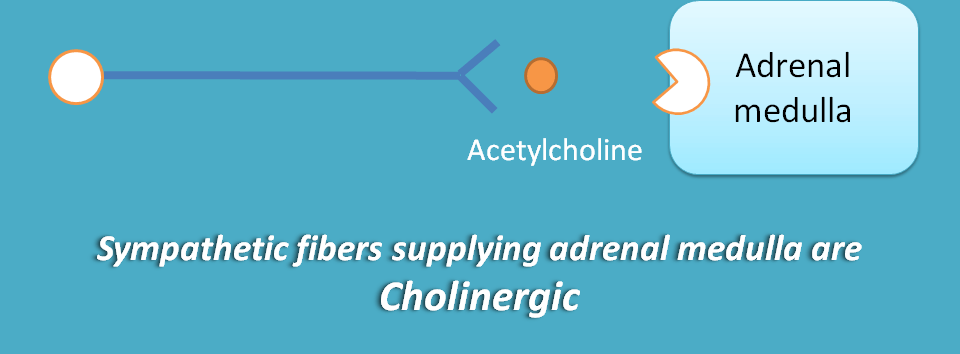Neurotransmitters in ANS
As already discussed earlier, neurotransmitters fill the gap at synapse to conduct the electical impulse in the form of chemical signal which is propagated across the postsynaptic membrane. Acetylcholine and norepinephrine are the two main neurotransmitters involved in ANS.
Since each division in ANS consists of two neurons, two neurotransmitters are required for each division, one at ganglia and another at postsynaptic membrane.
So, neurotransmitter is required totally at four locations for both sympathetic and parasympathetic divisions. They are
- Parasympathetic division
- Parasympathetic ganglia
- Parasympathetic postsynaptic membrane
- Sympathetic division
- Sympathetic ganglia
- Sympathetic postsynaptic membrane
We can also observe a single neuron supplying adrenal medulla requires neurotransmitter.
So, totally we have five locations in ANS where neurotransmitter is to be released.
Adreneric vs cholinergic
A neuron in ANS can release either acetylcholine or norepinephrine as neurotransmitter. The neuron can be called as cholinergic if it releases acetylcholine and adrenergic if norepinephrine is released.
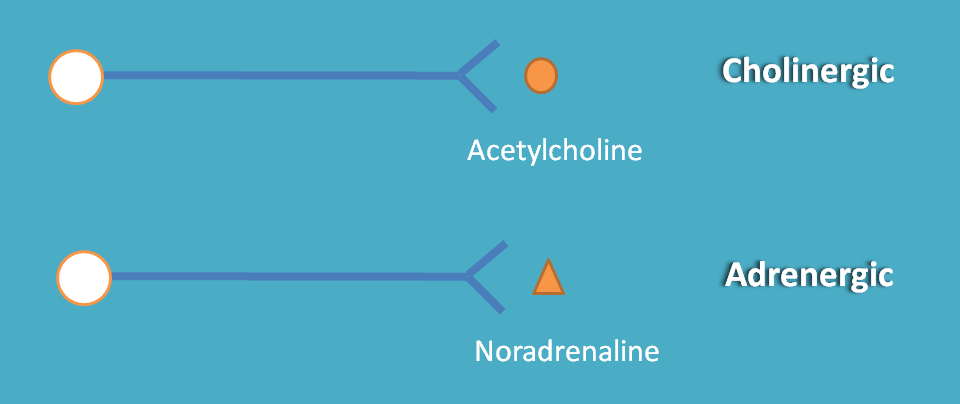
Now let's see neurotransmitter at parasympathetic division.
Parasympathetic division
Surprisingly, the chemical mediator released at both preganglionic and post ganglionic parasympathetic fibers is same i.e. Acetylcholine. Hence both preganglionic and post ganglionic parasympathetic fibers are cholinergic.
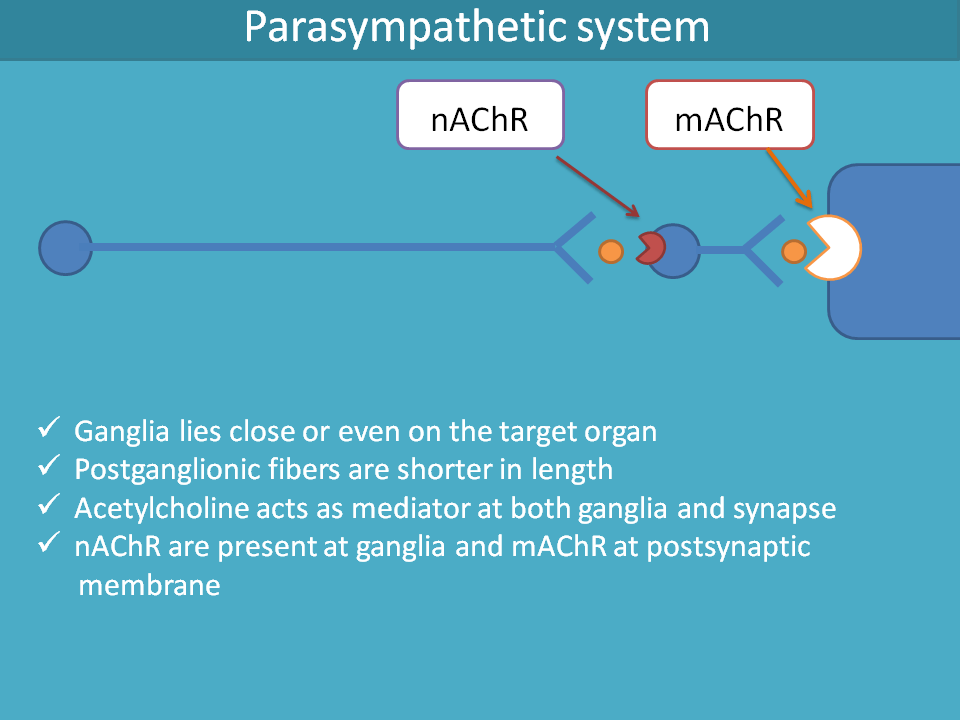
All parasympathetic fibers are cholinergic.
❞Sympathetic division
At sympathetic ganglia, acetylcholine acts as neurotransmitter. Hence preganglionic sympathetic fibers are cholinergic.
The neurotransmitter at sympathetic postsynaptic membrane is norepinephrine except at sweat glands.
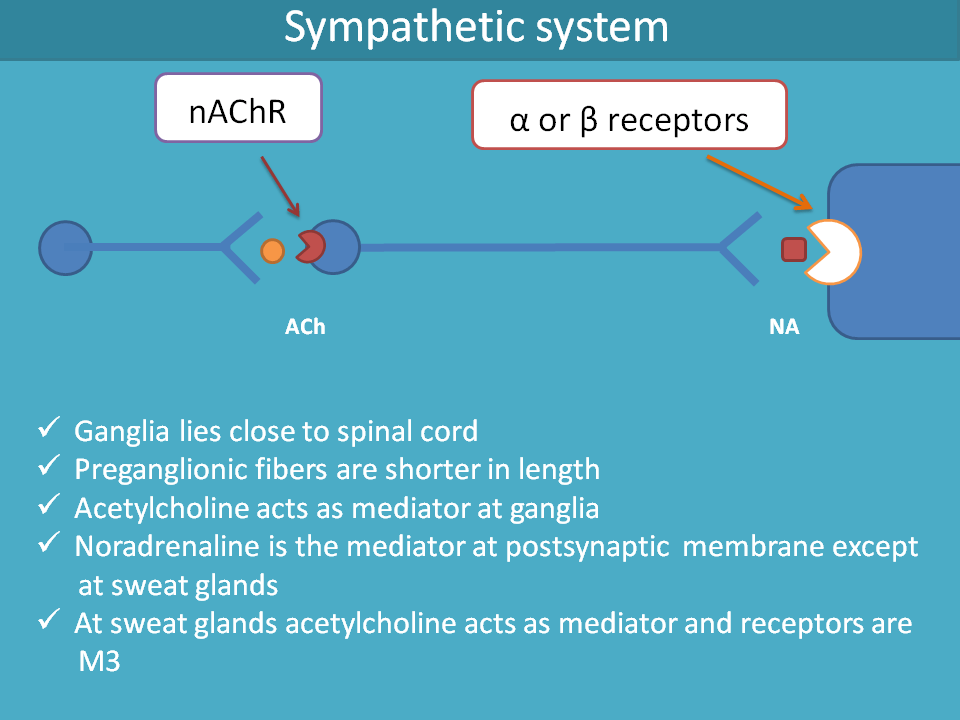
Many, but not all, of sympathetic post ganglionic fibers are adrenergic.
❞At sweat glands, sympathetic postganglionic fibers release acetylcholine hence cholinergic.
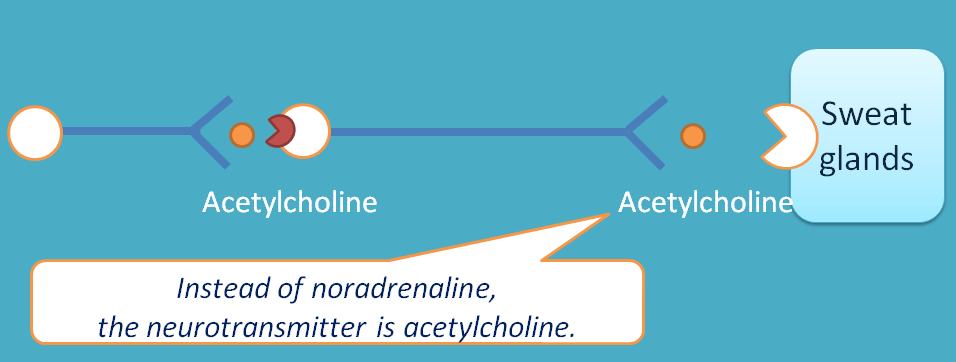
Adrenal medulla
Neurons supplying adrenal medulla are single neurons which release acetylcholine.
